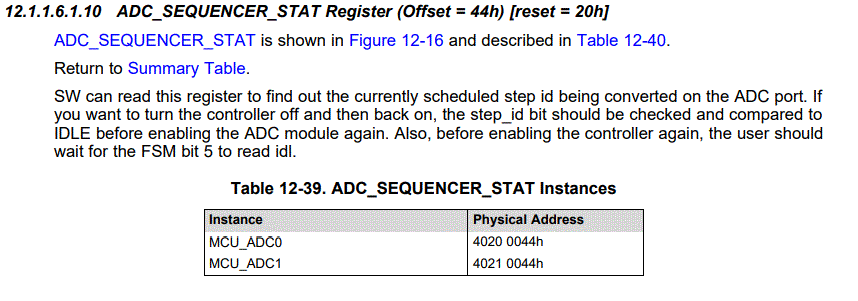Other Parts Discussed in Thread: SYSBIOS
Hello Experts,
I have written some code( A53 ) to access the below register
////////////////////////////////////////////////////////////////////////////////////////////////////////////////////
////////////////////////////////////////////////////////////////////////////////////////////////////////////////////
typedef struct
{
union {
uint32_t ADC_SEQUENCER;
volatile struct
{
uint32_t step_idle : 5;
uint32_t fsm_busy : 1;
uint32_t mem_init_done : 1;
uint32_t reserved : 25;
}STATUS;
};
}ADC0_SEQUENCER, ADC1_SEQUENCER;
#define ADC0_SEQUENCER ( *( (volatile ADC0_SEQUENCER* )0x40200044) )
#define ADC1_SEQUENCER ( *( (volatile ADC1_SEQUENCER* )0x40210044) )
then to read the register:
uint32_t a = ADC0_SEQUENCER.ADC_SEQUENCER;
a = a; // test
This cause the processor to exit on a fault… Is there any obvious reason for this.
Does the domain need to change ?
I have used the above code to access the PADCONFIG registers...no problems….but this is in a different DOMAIN….I’m not sure if this is relavant?
Some guidance, code would be appreciated.
Thanks
Carl


